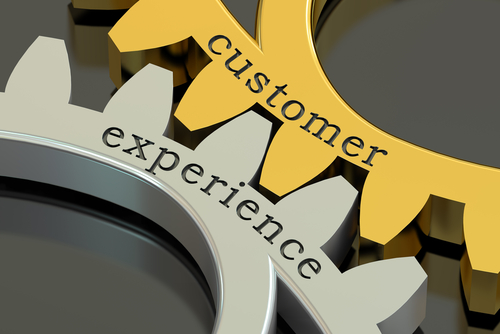There are many metrics and statistics you can collect behind the scenes at your inbound call center, metrics like average call wait time, average length of call, and frequency of first call resolution. And while these are helpful and can drive needed adjustments in your processes, they don’t tell you much about the customer’s experience. Indeed, there comes a time when you just have to ask the customer for their thoughts—and one of the easiest ways to do this is via a single question survey that’s administered immediately after the conclusion of their interaction with your brand. Here, three such questions that can go far towards helping you transform your customer experience for the better.
Question 1: On a scale of 1 to 5, how satisfied are you with your recent interaction with our company?
This question typically yields what is known as a customer satisfaction score and it is the most basic way to quantify your customer experience. Since the responses are so simple and easy to understand, they can help you understand how changes you have made to your call center or your customer service capabilities are impacting customer satisfaction. Say you recently added some self-service tools that help customers troubleshoot problems on their own before calling for expert help. And shortly after adding them, your customer satisfaction scores go up. This means that customers are enjoying the self-service tools and the side effects that come with them, such as shorter wait times to speak with an agent.
Question 2: On a scale of 1 to 10, how likely would you be to recommend our company to a friend?
The results of this question yield a metric called net promoter score, which offers a higher level overview of your customers’ thoughts on your company overall (while question 1 deals primarily with that particular customer service interaction). While the quality of customer service interactions is incredibly important, it can only go so far if your customers are not satisfied with the product itself, and net promoter score provides that component.
The key other part of this question is the actual question: how likely customers are to recommend your company. This is important because studies have shown that referred customers tend to become repeat customers more often and are much more profitable over time than the average customer. So the higher the responses you receive to this question, the more satisfied your customers are with your product and the more opportunities you have for growth and increased profits in the future.
Question 3: One a scale of 1 to 5, how much effort did you need to exert to get your concern or inquiry resolved?
Solving problems, even the most difficult ones, should never be difficult for your customers. It doesn’t matter if you make the best product in the world—if it is constantly causing problems and your customers are shouldering the bulk of the problem solving, they will not want to remain customers. Likewise, it doesn’t always matter if the solution is presented clearly or if your customer service agents are cheerful and pleasant—if it takes time and effort for the customer to reach that solution or that customer service agent it is going to stoke displeasure and reduce customer satisfaction. Using this question as a single question survey will help you avoid this potential pitfall that can wreak havoc on your customer experience.
Another factor that can sour your customer experience: Dealing with agents who are forced to navigate a clunky and nonsensical call center platform. In those cases, CallShaper may be the solution. To learn more about how, request a demo today.


Leave A Comment